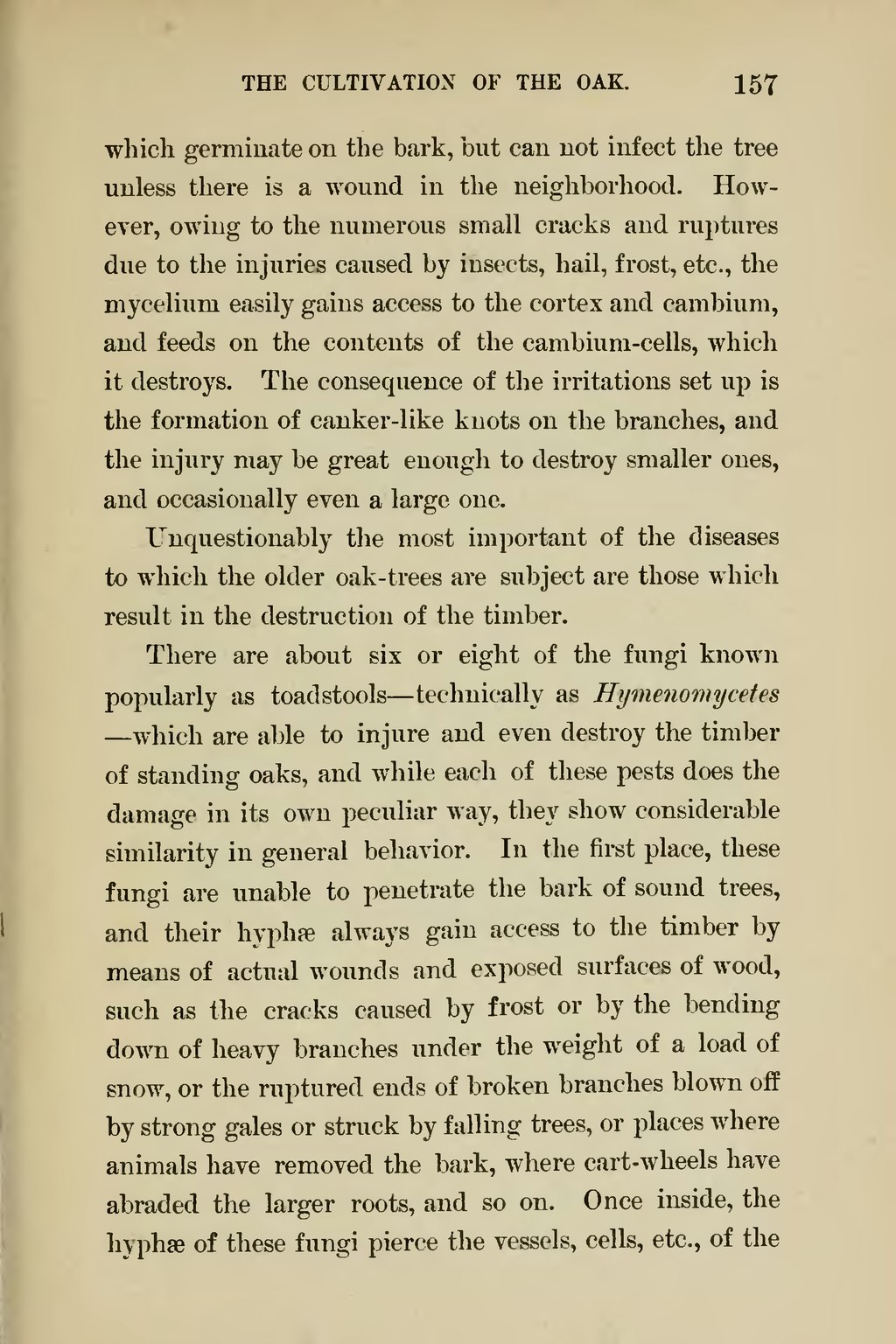which germinate on the bark, but can not infect the tree unless there is a wound in the neighborhood. However, owing to the numerous small cracks and ruptures due to the injuries caused by insects, hail, frost, etc., the mycelium easily gains access to the cortex and cambium, and feeds on the contents of the cambium-cells, which it destroys. The consequence of the irritations set up is the formation of canker-like knots on the branches, and the injury may be great enough to destroy smaller ones, and occasionally even a large one.
Unquestionably the most important of the diseases to which the older oak-trees are subject are those which result in the destruction of the timber.
There are about six or eight of the fungi known popularly as toadstools—technically as Hymenomycetes—which are able to injure and even destroy the timber of standing oaks, and while each of these pests does the damage in its own peculiar way, they show considerable similarity in general behavior. In the first place, these fungi are unable to penetrate the bark of sound trees, and their hyphæ always gain access to the timber by means of actual wounds and exposed surfaces of wood, such as the cracks caused by frost or by the bending down of heavy branches under the weight of a load of snow, or the ruptured ends of broken branches blown off by strong gales or struck by falling trees, or places where animals have removed the bark, where cart-wheels have abraded the larger roots, and so on. Once inside, the hyphæ of these fungi pierce the vessels, cells, etc., of the
